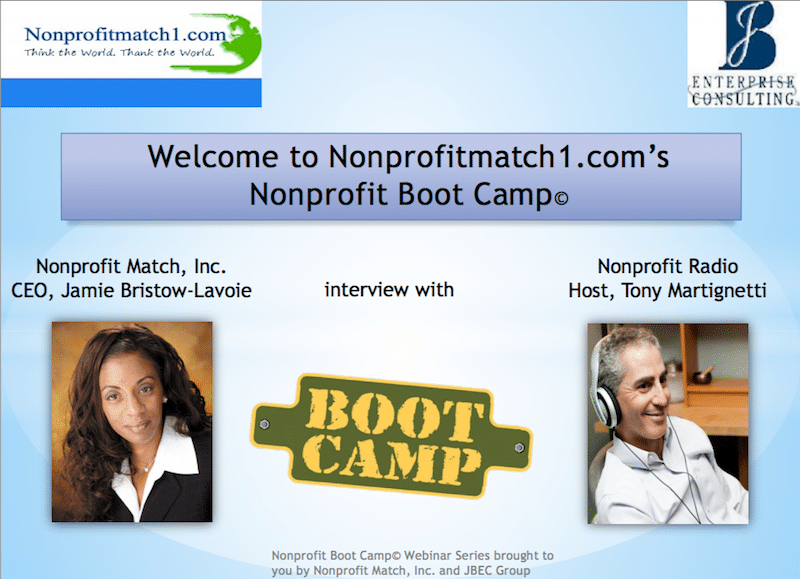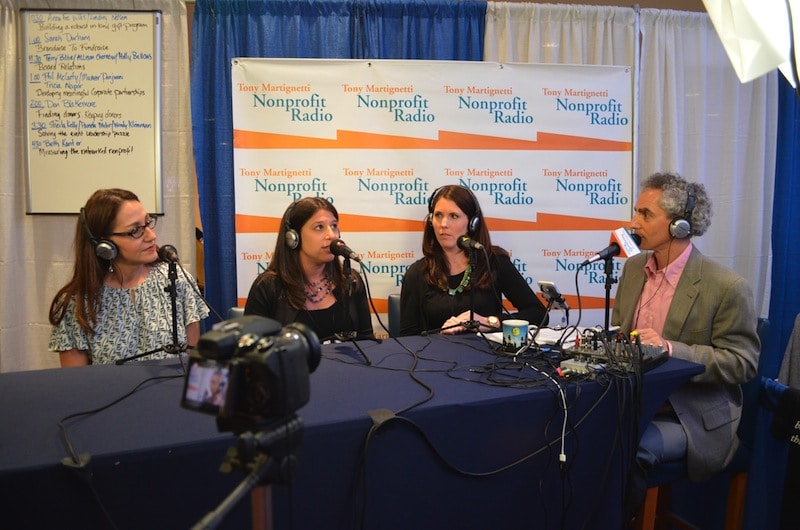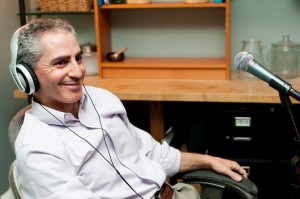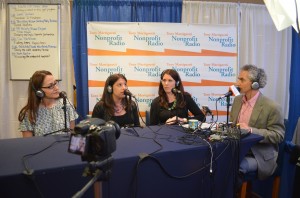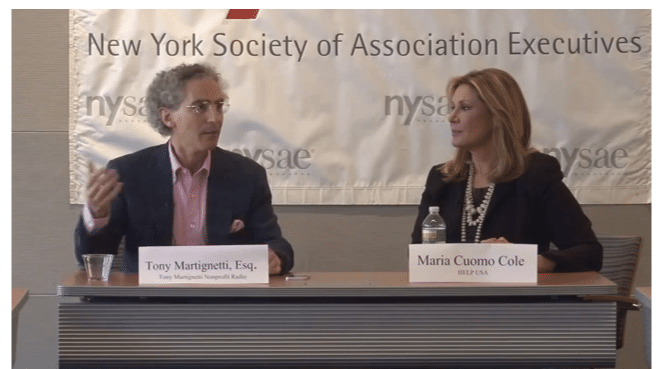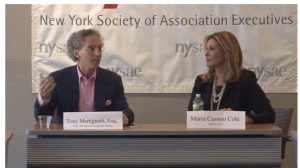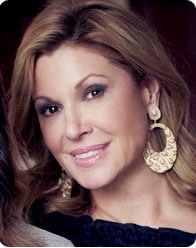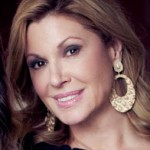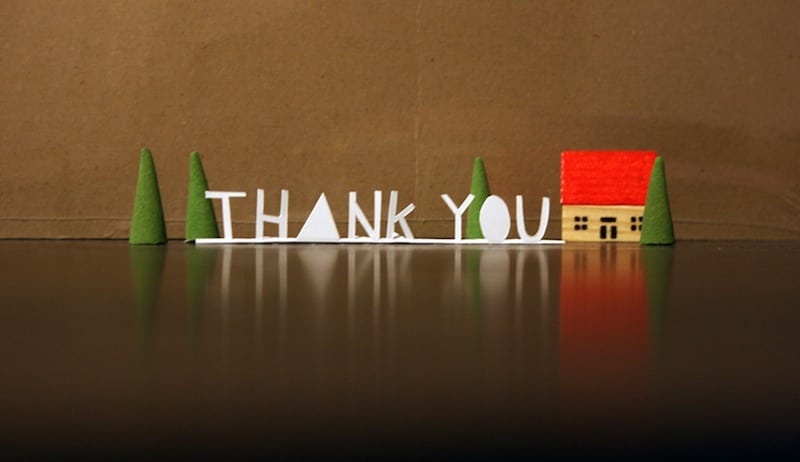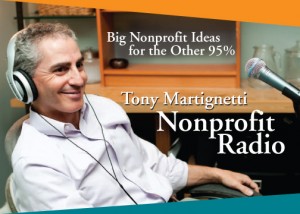You’re on the air and on target as I delve into the big issues facing your nonprofit—and your career.
If you have big dreams but an average budget, tune in to Tony Martignetti Nonprofit Radio.
I interview the best in the business on every topic from board relations, fundraising, social media and compliance, to technology, accounting, volunteer management, finance, marketing and beyond. Always with you in mind.
Transcript for 151_tony_martignetti_nonprofit_radio_20130719.mp3
Processed on: 2018-11-11T23:01:35.825Z
S3 bucket containing transcription results: transcript.results
Link to bucket: s3.console.aws.amazon.com/s3/buckets/transcript.results
Path to JSON: 2013…07…151_tony_martignetti_nonprofit_radio_20130719.mp3.927531392.json
Path to text: transcripts/2013/07/151_tony_martignetti_nonprofit_radio_20130719.txt
Durney hello and welcome to tony martignetti non-profit radio big non-profit ideas for the other ninety five percent. I’m your aptly named host it’s friday, july nineteen oh, i hope you’re with me last week why i didn’t do it dermatitis if it came to my attention that you had missed measuring the network non-profit with beth cantor she’s, co author of the network non-profit and measuring the network’s non-profit and she talked to me a tte fund-raising day last month about wide engagement and measuring your multi-channel outcomes and goodbye google alerts maria simple, our prospect research contributor and the prospect finder had free alternatives in case google alerts disappear this week. Mario cuomo, cole on relationships miss cole, a philanthropist and board chair of help yusa shares the professional value of all of her relationships, including her mom and how they’ve helped her and help yusa succeed. We talked at the june meeting of executive women in non-profits, which is a part of the new york society of association executives and tumbler tactics. Amy sample ward, our social media contributor, co author of social change, anytime everywhere and ceo of inten, explains the value of tumbler how to decide whether you should be in tumbler, blogging and how to get started between the guests on tony’s, take two there’s a myth going around planned e-giving that we’ve got planned e-giving covered, and i think a lot of non-profits actually don’t have it covered talk about that. My pleasure. Now, to introduce my interview with maria cuomo cole, i do want you to know that the second half of this interview so after the break, there’s a part of the discussion because we at the meeting, we opened up the conversation to a broad discussion. Part of discussion is kind of quiet, little low. I know about it already. You don’t have to tweet or email everything i know, but a couple of women said some very poignant things about relationships in their lives, and i wanted to include it. It’s, not silent, but if you have had headsets or earbuds, you may wanna use those in the second half of this maria cuomo cool interview. Here you go, everyone welcome. We’re at a meeting of the executive women in non-profits a shared interest group of the new york society of association executives. You will find them at n y. U s a net dahna that was the obligatory video in trim for this will be on youtube in a couple of weeks, and you’ll all get the link from holly and very shortly, it’ll also beyond my pad podcast on a non-profit radio you’re talking about relationships today and first i’m goingto have a chat with maria, and then after that, we’re going to open it up and have you share some stories about relationships that have been important to you personally or professionally and how those have helped you professionally. Lots of different kinds of relationships, whether their peers, people working for you people work. You work for mentor mentee, lots of different possibilities. I’m very pleased to introduce my voice. Just crack. Did you hear that? Pleased to like a sixteen bad alex. Like a sixteen year old, my voice is cracked. Very pleased to introduce maria cuomo. Cole she’s, the chair of the board of help yusa, a leading developer of housing for those suffering homelessness and low income she blocks for the huffington post she’s, a film producer and a philanthropist. We’re gonna learn more about all of her work. Maria cuomo, call. Welcome. Thank you it’s a real pleasure to have you. Why don’t you start telling us a little about maura about help us? We’ll help you say, uh, well, our mission is to create opportunities through housing and services to help stabilize families and crises and individuals and crises who are not living independently. Andare are long term mission is to help those individuals sustain housing stability. And we do that through a very innovative a real estate model of permanent housing with support services on site, child care services, employment, mental health counseling, etcetera. Is there also something transitional before people are bottle? Actually, yes. The model was actually created in the nineteen eighties. Find my brother andrew, um, during the koch administration as a family transitional homeless model and that that model has grown in new york. We have over two hundred colleagues today providing transitional homeless services and thie help model was named a congressional model in nineteen, eighty seven and b has become part of each administrations working with homeless populations across the country. Actually, our permanent housing model is a more sophisticated application, basically another another financial model that has enabled us to provide a long term permanent housing for the same populations um, including a lot of veterans latto very is a no that’s. Homelessness is a yeah fine problem. That’s unfortunately true. One and four homeless men is a veteran that’s been the case? Actually, for many years some say that the number is closer now to one point three one out of three. There are sixty one thousand homeless veterans each night, sleeping on the streets in america, which is just devastating for women as well. And for women, well, for female vets is a growing population that have that are largely underserved. Um and it’s, a population that help yusa has tailored programmes to accommodate there has been improvement. The va has quickly improved and expanded their services for women and for young for young veterans returning the Numbers were as high as 1 hundred twenty one even hyre two hundred thousand homeless veterans just three years ago. So so things are improving, but a great deal of work needs to be done quickly to accommodate our returning veterans. You have some interesting revenue sources, including comfort foods. I saw a chocolate. You, my brandraise sample. Try and focus for the morning. But no way try everything. Yes, we’ve been able to use our help, yusa, artwork and the brand for some social enterprises, we’re very fortunate to be one of the nineteen eighties non-profits in new york that benefited so generously by, uh, keep bearing such a remarkable talent artist philanthropist in his own right said such a generous spirit, the organization can’t achieve this kind of success and prominence on its own so let’s move and talk a little about relationships how have generally relationships been important? To help us is growth and to your, you know, your professional ball so well, i mean, relations abroad, a broad question, but i mean the very model, uh, of help usa, the innovative model is really one of public private sector partnership, and the model on lee only works because we have the interests of serving special needs constituency using private resources and public a public resource opportunity. So local governments, state government, federal government, private banking communities, for-profit uh, businesses and individuals, all i have to really partner work together in order, tio, create a bill, help residents and provide services long term on dh for you personally, relationships, whether they’re let’s. Let’s, start with. Since there were talking about the organization, level your relationships with peers that other organisations, whether for-profit or non-profit, well, our community. I’m partial. I think that the new york city non-profit community as a whole is really, really the most robust, professional, sophisticated and collaborative in the country. Ground experience. Um, and i think we really set a standard here for communities around. Give a shout out for new york city, new york city. Relationships, collaboration. And now in our in our space of developing housing and services for special needs populations, uh, provider community has has been extremely collaborative through the years. In fact, when my my brother andrew was hud secretary, we were required in new york city to work as a consortium application for funding toe hood. So, you know, the mayor’s office communities, state and providers had to work cooperatively at designing assessment and and proposing strategies for support so there’s no greater exercise than to bring two hundred plus organisations into, uh, into one collaborative application process. Andi, i think the community works very well in maximizing core strengths, individual agencies to work with populations that they have the head home to the expertise to serve. Uh, i know our agency and many others try hyre very, very hard not to recreate the wheel. You know ourselves if we are providing services in the bronx for children. And the children’s aid society, for example, is a very prominent agency, of course in new york city for youth services. We’ve turned to them to ask them to help with, you know, with complimentary services for our homeless youth after school. And in many in many such examples, we’ve been able to better serve our populations on dh there could be challenges to in in for exam, for instance, bringing together two hundred organizations or even just partnering oneto one there has to be compromised and saying little about overcoming some of those challenge that’s true that’s true, i mean, i think that our experience has has been that when there is a need that another organization can serve and we’re providing, we’re providing whether it’s, the constituency, the population, the resource of our buildings, for example, we have beautiful community spaces and, you know, retail space that a lot of non-profits need to deliberative services so that’s ah, point of partnership and and, uh, coop cooperative collaboration, um, so we we really haven’t encountered i can’t say that we really encountered problems in that regard, it’s such a rich community in new york of service providers that we have been able to find partnerships to serve our families, our single homeless individuals, veterans, children and really enhance our overall delivery. Right now we take a break for a couple of seconds, and while we do, if you have your ah, you’re buds or headset. You may want to get it, because the second part of the upcoming segment, after the break is a little quiet, but very good, things said by the women who were there. Thanks. Talking alternative radio twenty four hours a day. Do you need a business plan that can guide your company’s growth? Seven and seven will help bring the changes you need. Wear small business consultants and we pay attention to the details. You may miss our coaching and consultant services a guaranteed to lead toe. Right, groat. For your business, call us at nine. One seven eight three, three, four, eight, six zero foreign, no obligation. Free consultation checkout on the website of ww dot covenant seven dot com are you fed up with talking points? Rhetoric everywhere you turn left or right? Spin ideology no reality, in fact, its ideology over intellect no more it’s time for action. Join me. Larry shot a neo-sage tuesday nights nine to eleven easter for the isaac tower radio in the ivory tower will discuss what’s important to you society, politics, business and family. It’s provocative talk for the realist and the skeptic who want to know what’s. Really going on? What does it mean? What can be done about it? So gain special access to the ivory tower. Listen to me, larry sharp, your neo-sage. Tuesday nights nine to eleven new york time go to ivory tower radio dot com for details. That’s. Ivory tower radio dot com everytime was a great place to visit for both entertainment and education. Listening. Tuesday nights nine to eleven. It will make you smarter. Hey, all you crazy listeners looking to boost your business? Why not advertise on talking alternative with very reasonable rates? Interested simply email at info at talking alternative dot com yeah, those watching from outside new york city. I hope your thing close attention because new york is not a unfriendly place should come. You should come. You should visit. You should collaborate. Way all know this here in the room. So i’m speaking to those who are watching from outside new york were not unfriendly here we welcome you. We want to work with you. We want to collaborate. Let’s, move to the personal side, i think dahna all of us benefit from personal mentor mentee relationships, maybe with peers. Other colleagues say little about how that’s helped your professional. Well, this is my twentieth year with help u s a all right, a measurable amount of time. Two decades. And i could say, you know, some of the relationships that we’ve developed through the years with private businesses with other non-profits have really helped our model flourish, you know? I can i can say kapin partnerships with unrelated businesses to specifically what we do with bloomingdale’s the retailer, we’ve had a very close partnership with them for now. Over fifteen years, serving children have been volunteermatch entering youth program. That’s got to mean that you have a good relationship with the ceo there or someone at the high level. And then you and the children from the ceo’s leadership, of course, is always essential and establishing the value of voluntarism within a company, certainly and cooperative spirit it’s gotta trick your spirit has to trickle down, but, you know, they have a fantastic executive team that really cares very much about giving back to the communities and our partnership that started in new york with volunteer mentoring after school mentoring for at risk youth has grown teo all of their forty stores across the country, really expanding our model and our service delivery. You have some specific advice for the relationship between the ceo or chair and the volunteer board of trustees within the organization to help us, you know, here, too, we’ve been blessed with tremendous, tremendous board leadership through the years, um, individuals who bring different sorts of talents and acumen to help us do what we do, which is a fairly sophisticated, complex collection of services. So whether the individuals have business acumen, real estate, finance, thie arts, education, health um it’s, a very mixed group and there’s always that challenge there’s always that challenge. Of finding the right trusty who has the skills that you’re lacking and we know there were plenty of attorneys, there are plenty of sepa is but finding that right, one who works well with the mission believes in the mission and is going to be a value to the board. Yes, that’s true, that is true. Our board members tend to be tend to be long timers, too. I can’t think i can’t think of more than one or two cases where board members have actually had to leave for different reasons moving, you know, changes, work or environment, but it’s a very, very committed team, and we work hard building those relationships and really keeping our board very engaged. We need their service, we need there their contributions. So we tried to make careful matches of program, area and growth area where they can, you know, really make a difference and participate, contribute and and that’s critical to find out what they want to contribute to what programs interest them so that they are used in the best of the best are definitely yes, i’d say that’s true, absolutely. On the sort of on the more personal side of know your mom has been and important mentor for you say, say something about that, my mother, my mother jokes that she works for me, and i joke that i worked for her. I think it goes both ways. Sometimes i see we actually have been running her one two, one youth mentoring program since nineteen ninety four. She had started it in the early eighties, she’s truly a national pioneer and the mentoring movement, and, uh and believes in it passionately and developed an excellent model that is still used today. Um, she started it in the early eighties in new york state schools to lower the dropout rate and focused on foster care aged out. You and we’ve been able to maintain and nurture and grow that model since nineteen ninety four into mentoring yusa, which is delivering services in eleven markets around the country and really thrives on partnership because, of course, it’s, a volunteer mentoring program, we work closely with the corporate community and community organizations. The model is expert in training mentors, so very good at the engagement piece of bringing a volunteer in working. With them improving their skills and then managing and, uh, providing support for that volunteer. Want one it’s very special mentoring partnership. What would you, uh, would you say you’ve learned most important you’ve learned from your mom? Oh my gosh, she is remarkable still today at i won’t sit well, she loves being a tea, so i can say that she absolutely loves being eighty and celebrated it now she’s more than eighty and she is just a dynamo. She contributes to the program significantly, strategically, operationally still, and i’ve learned everything about how to well, i’ve learned everything really about what voluntarism means from her she’s always prized that word that term, we don’t use it much in our non-profits space, i think to an extent it becomes the notion of volunteering just becomes part of what you do, right? And we were working with volunteer constituents. We don’t often value their contribution of giving personal time and making that commitment, which really is a very special special make perhaps the most special sort of contribution, and she values and prize is it reminds me to respect it and honor it all the time. How did you learn? That that ethic growing up, she was always doing it, and she always no matter what you know her period of life. Wass but, you know, as a young age, she had us out you no selling daffodils for american cancer society, and this spring, i mean, i had no idea what even wasit was so young, you know, we sort of just followed her along, like her ducklings and all her various activities, whether it was, you know, school, church, american cancer society, other you no other formidable non-profit efforts always service oriented, and then, of course, in her work with my father, their mission was service, of course, that their lives have been dedicated to public service. And how can we pay this forward to the next generation of non-profit ceos? You know, i think that you i think for every non-profits ceo on dh through the staff line and the board lines, you know, again, i think that people, especially here in our community, i think people really, um, value and respect what they’re doing, they’re making a clear choice, making a clear choice to work in a non-profit environment, everybody knows that most likely you’re going to make more money in the private sector. So you’re you’re making a choice, you’re making a sacrifice and i believe that’s because you’re a person of mission and and, you know that passion it’s what allows you to do the best work? And and how can we be good role models for the for the next-gen coming, the next generation, i think, is to, you know, it’s summertime, we all have this valuable prized interns it’s, you know, include them, include them in the work, really mentor them the mentoring, uh, mentorship we can all provide now at this point in our careers is really very, very important and valuable. Um, and i think we could do that with our co workers with our young leaders is to just, you know, really be their share with them and support them and there’s often a lot that we can learn from those were mentor from the mission, yes, we need to stay sharp, yeah, in things that they’re much better versed in. Yeah, and that doesn’t only mean social media and technology, but we’re going to talk about that in the bigger discussion miree anything you want to leave, leave. Viewers listeners with around the value of of of a relationship on gets its report lies as supposed the relationship with are your viewers, our listeners today, that non-profit initiatives work because of public support, that it’s it’s, not just the small universe that we design and interact with, but it is the greater community, and that we need the support. We need the interest of the greater community. Teo, please follow us. Watch us think about how you can contribute and be apart of the work. Thank you very much. Thank you for sharing your expertise and your experience. Fremery in-kind. I’d like to open up tio to a real group discussion. Who wants to share a story of a mentor? That was that was important to you. Excellent. Yeah, linda. Miree treyz i don’t want to put you on the spot to single someone out, because then that’s. Not fair. But i’m sure women all know who you’re. They all know who you’re talking about. Oh, there you go. Your strategy. No. Yeah. Hyre wells was the share. Ah, a story from someone who was important to your influential to you. Maybe not. A formal may not have been a formal mentor. Mentee, please. Thanks, michelle. Hyre it sounds like randy was always there for you, either formally or informally, right on the record or off the record. Yeah. Beautiful. Thank you. Thanks, michelle. How about others? Anybody on the left side of the room? One somebody who was important. Police wonder what about a special project? Four. Introduce yourself, please. I want the special projects report issue i want with outside consultant had been a corporate person for a very long time. This this particular opportunity was really fairly new for me, and he was really great at a kind of coaching me counseling me on a lot of some of the things that we needed to do some of the things you expect because it was very successful, whether there would be what panels or or other things that you would be invited, too, because i was a person who worked on the project and he was just very generous with his thoughts about what was going to happen next, what to expect and something sounding board to kind of know how to respond sometimes wasn’t a formal mentor, like lots of programs with someone somewhere else is mental, but it’s just sort of up a relationship that you kind of developed with somebody because you seem to have some sort of kinship and they’re just going to be generals with heimans thoughts just trying to help you go in the right direction and help successful and that’s really important. So whether it’s an organization like this or whether it’s i’m something should happen to work outside, those people kind of help you shape your life. What do you make a really excellent point about us having to be open to these kinds of relationships? You just never know who the next person is going to be. That khun, you know, help in a small way, helping a really long term, valuable way the way wanda and michelle are talking about. We just have to be open to these. And they’re not as you said, wanted. Not always formal. Not always. This person is assigned to you a lot of times, right? People just come into our lives, and i think we need to be open tio to the possibilities. Uh, you know, holly, please. Good morning, falik connick, vice president, accounting company. Listening to maria talked about her mom and i heard a top about her mom before. It reminds me when i grow up. Grew up in the early sixties. I know it stays. When all my friends mom’s home, you know, and she was having and i was having dinner with my baby sitter, my mom was always working. I wasn’t a very well child. I had a lot of healthy hands. I always thought that when i got older, my life would be a little limited with what i could do with my career. And my mom used to always say to me, holly, when somebody tells you that you can’t do something, you just keep keep going at it and you just keep going at it on my mom today, next week, could you usedto work continues to try heimans you’re so crap, because i’ve been where i have been for twenty five, you’re like the rest of you being in the non-profit morning in-kind mama’s variety has nothing that i haven’t been able to in all my years and so on. My mentor holly. Thank you, it’s. Very touching, thanks very much. Stephen colbert. I don’t know if any of you saw this brooke broke character, which i don’t know if it’s impressive probably is unprecedented broke his his character on is on the show for the first four minutes. I think it was two days ago wednesday to pay tribute to his mom, who just died. I do. That was so touching. You know, he is the guy. I mean, i’ve seen him live and he, you know, it’s very rarely breaks character, but i hear him to see him do that. That was special in itself. And then just the words no r hyre very special tribute. So, thanks a lot. Thanks for sharing my thanks to everybody at that shared interest group of se e the executive women in non-profits there was a very, very lovely and times touching meeting. A lot of the women shared some very poignant stories, and i appreciate that it was it was really lovely to be there. And so my thanks to you, everyone there i gotta live listener love before we take this break. Tons of people in new york, freeport, new york, new york, new york, hicksville, new york’s a long island two out of three long island newport, north carolina. I’m going to be there soon. Reston, virginia and oregon lake oswego. I wonder if it’s amy live listener love to everybody, though. Is that those that’s everybody? In the u s but continuing in north america reinardy mexico. Welcome, live, listen, love to you and going further south. Campiness, brazil. Welcome. Lots of visitors in asia will get to them. Right now. We go away for a couple seconds when we come back. Tony’s, take two, and then amy sample ward on tumbler tactics. Stay with me e-giving thinking, shooting, getting, thinking things, you’re listening to the talking, alternate network waiting to get in. E-giving good. Are you suffering from aches and pains? Has traditional medicine let you down? Are you tired of taking toxic medications, then come to the double diamond wellness center and learn how our natural methods can help you to hell? Call us now at to one to seven to one eight, one eight three that’s to one to seven to one eight one eight three or find us on the web at www dot double diamond wellness dot com. We look forward to serving you. Hi, i’m ostomel role, and i’m sloan wainwright, where the host of the new thursday morning show the music power hour. Eleven a m. We’re gonna have fun. Shine the light on all aspects of music and its limitless healing possibilities. We’re gonna invite artists to share their songs and play live will be listening and talking about great music from yesterday to today, so you’re invited to share in our musical conversation. Your ears will be delighted with the sound of music and our voices. Join austin and sloan live thursdays at eleven a. M on talking alternative dot com. You’re listening to the talking alternative network. Latto if you have big ideas and an average budget tune. Tony martin. Any non-profit radio we dio i’m jonah helper, nari team in co founders of next-gen charity dahna welcome back that gentleman whose voice you heard say you’re listening to talking alternative broadcasting he’s from australia and i just met him about a half an hour ago. He was in studio he’s, now a buddhist monk. I don’t know what his name is now, but at the time that he that recording he was his name was giorgio rivetti. I don’t know. I don’t know what he uses now, it’s sam says he still uses george over petty so he’s but he’s but he’s provoc rah george, your petty a buddhist monk um, more live listener love, asia gotta hit asia hard. Lots of listeners in seoul, south korea, thank you very much. And also in sioux on korea live listener love to everyone in korea on your haserot fuck uac of japan in chino, maya, japan and tokyo welcome live listener love, konichiwa, it’s, time for tony’s take two there’s this myth going around non-profits i’ve heard it for many years as someone who does planned e-giving consulting and that is that if you have someone in your organization who has planned giving in their title, then you’ve got planned, giving covered it’s taken care of and what that full short when that title is shared with some other title like i’ve seen director of annual giving and planned e-giving i’ve seen director of major gifts and planned e-giving i’ve seen foundation and planned giving fund-raising, and the problem becomes that any of those things or others that plan giving might be paired with in one person’s job responsibilities job spec is that everything will take priority over planned e-giving because anything that you pair it with will have more immediate deadlines that’s especially true in annual giving any e-giving sometimes has weekly production goals and certainly monthly, but anything you pair it with, it’ll have more immediate deadlines, and it’ll be more immediate cash to the organization because planned e-giving is cash to the charity at the donor’s death, in most cases, a couple of exceptions, but most it’s at the donor’s death. So the other thing that the plan giving his paired with is always going to take precedence and it’s going to get a lot more time than the proportional representation it has in the title. So if it’s half the title, it’ll probably get about five percent of the time if it’s a third of the title, i have seen it paired with two other things once it’ll probably get two percent of the time. So just because you have planned giving in someone’s title, you don’t have plan giving covered for your non-profit that’s not on my block at tony martignetti dot com this week, it will be, but it’s not, i wanted to just raise it irrespective of it not being on the block and that is tony’s take two for friday, nineteenth of july twenty ninth show of the year. I’m having a hard time believing it’s nineteenth of july amy sample ward is with me you know her high i love so having a hard time believing it’s the nineteen no kidding, but you’re not supposed to talk yet. I didn’t give you the proper introduction. Oh my gosh, yeah, i blew it! She’s, the ceo at non-profit technology network and ten her most recent co authored book is social change anytime everywhere about online multi-channel engagement, her blog’s that amy sample, ward dot or ge? And on twitter she’s at amy r s ward. Welcome amy sample aboard hello, we’re talking about tumbler today, but you’re out and you’re out in oregon in the portland area. I am. I think that live listener out in oregon was not me. It must be someone else related. Lake, we go. Oh, it is oswego, not a wego. Okay, oswego. Thank you. You’ve corrected me in the past about pronouncing oregon, which i have now. It’s ah, weak a sweet go. Thank you. But you are in portland proper. Is that true? Yes. Panepento office eyes right downtown. Okay. The city of roses i found yes, sophie of roses. Even have a rose festival and a rose garden. Yes, i don’t. You have a research rose garden upon a mountain? I think i read. So you’re the city of roses in in the beaver state. Excellent. Exactly. Okay, we’re talking about tumbler this month. Yeah, you know, way whenever we talk about specific social media channels or how to use the social tools, i feel like you and i always get back, teo, at least a couple of minutes talking about staffing. And i thought that was so appropriate after your take two today. Because whether it’s fund-raising or you know any of the other kind of tools and communications that we’ve talked about on the show before, just because someone has a title does not mean that is the only person that could do that work or that is responsible for that work. So, you know, today talking about tumbler think it gets categorized into ah, blawg, you know, because it kind of functions and that that’s the way the content operates, but that doesn’t mean that just because you have a staff person who normally puts content onto your website that they’re the person that’s now going to be managing if you have a tumbler account, you know, it has to be based on what we need outside the organization is who’s reading that content? Where is the content coming from? On dh, how do you deliver that? Not whose title inside of the organization is tumbler manager, you know? Yeah, i see tumbler often called a microblogging site, and i don’t really think that does it justice it’s it’s so much more than what what people think of is blogging. So i think the first thought when you see that description is not going to be as rich’s tumbler really is. Yeah, that’s a great point, i mean the description of it as a micro blogging is trying to be objective about how the content works because it does like a block have, you know, each post going chronologically, and you can put your content in their etcetera and it’s, you know, a static kind of place, but i’ve finally seen over the last few months, people really recognizing that tumbler is a social platform, not necessarily like a social network in the way that you think of facebook, for example, but the purpose of it is social. When allison and i were doing research on the kinds of user demographics of all different major social platforms, when we were putting the book together, one thing that surprised us too see written down is the number but didn’t surprise us from the qualitative experience side is that the majority of tumblers content is re blogged, meaning i posted something on my tumbler and you liked it and you, you know, re posted it onto your tumblr like a re pending on pinterest, yeah, so if we’re retweet into him, has to be a social platform if all the content is getting shared around and the purpose, you know. Of having your tumbler is kind of like, um, it’s a little bit if you want to think about it, like pinteresque, where you’re there and engaging and checking out other people’s content because you’re kind of curating your space, you know? And and that means you’re going to pull from all different users because you’re creating this one, you know, tumbler account that that’s all on your topic or whatever you do, you want to say so? It’s definitely social and i think that’s why organizations, they’re starting to realize it may have a role in their content plan and their community engagement plan because it isn’t just one more place for their randomly posting content. You know, there are people really engaged there, okay? And it’s also visual there’s a big visual content, which reminds me of pinterest and a little bit of facebook, facebook is pretty visual, too heimans has that beyond you know what? What you’d think of if you hear microblogging has this visual aspect, yeah, exactly. And so there’s there’s so many visual type platforms now that are gaining tons of popularity, we saw that huge spike in adoption for a pinterest but now we’re also seen instagram and vine and then instagrams video because of vine, so these this focus on pictures or really short videos and wanting to engage, you know, around a visual piece of content less so that the traditional kind of a block post where your you’ve written out some tacks on and i think what’s great about tumbler, is that it is such a hybrid, you know, it isn’t like pinterest where it is just going to be photos all over the place, and just by the functionality of the tool, the text is often kind of hidden or rolled up, you know, you have to click on it to see what the caption may have been or what the comments were it’s really trying to be photo first or a blogger where it’s obviously text first, so tumbler kind of merges them together where the photos are really prominent or video or whatever you’ve posted there, but it doesn’t hide whatever text you do include also sort of like twitter it’s it’s pretty quick moving too? Yeah, for sure i mean both from the user sample, you know it’s pretty easy, tio, if you have the app. On your phone or you’re doing it from the web, you know, just post that quick photo. It integrates with lots of platforms so people could be auto posting to tumbler every time they, you know, save content somewhere else. But as faras the digesting of that content inside the followers of your tumbler, i mean, tumbler just has really high numbers as faras people, you know, total engaged users, active users, users, they log in regularly, but also people, you know, using the mobile site, checking at multiple times a day to follow along. So it is fast moving, i think because people keep checking it. And so then people want to keep adding to it all the time. We have just about a minute before we go away for a couple minutes. Let’s talk a little about the engagement around conversations to and what non-profits should be could be looking for around their issues. Yeah, i think it’s tumbler is an interesting channel and we can talk more about this after the break. You? But i think there’s there’s two riel opportunities one is toe kind of, you know, own own account. Creating the count. Make it very clearly, your organization’s account and manage it. The other avenue to go is to support your community members or a superfan or ah, long time volunteer or even donor-centric area, because it’s their personal passion and just supporting them. Managing that account, whether that sending them, you know, content or news, they’re great photos or pointing people their way, you know, using it as a as a spotlight. So and then you’re just kind of sending stuff their way, but you’re not directly managing it. So i think there’s two, two ofthe avenues to go. Okay, we’re gonna take that break, and when we come back, of course, i mean, now keep talking about tumbler tactics and stay with us. You’re listening to the talking alternative network. Are you stuck in your business or career trying to take your business to the next level, and it keeps hitting a wall? This is sam liebowitz, the conscious consultant. I will help you get to the root cause of your abundance issues and help move you forward in your life. Call me now and let’s. Create the future you dream of. Two, one, two, seven, two, one, eight, one, eight, three, that’s to one to seven to one, eight one eight three. The conscious consultant helping conscious people. Be better business people. Dahna have you ever considered consulting a road map when you feel you need help getting to your destination when the normal path seems blocked? A little help can come in handy when choosing an alternate route. Your natal chart is a map of your potentials. It addresses relationships, finance, business, health and, above all, creativity. Current planetary cycles can either support or challenge your objectives. I’m montgomery taylor. If you would like to explore the help of a private astrological reading, please contact me at monte at monty taylor dot. Com let’s monte m o nt y at monty taylor dot com. Talking alternative radio twenty four hours a day. We got more live listener love ryan from washington, d c first time listener. Welcome to the show. Thanks for tweeting. Hangzhou, china, ni hao and hong kong welcome live listener love to everybody listening like, oh, we got more in the u s laguna woods, california and is it lee hae l e h i utah welcome live listener loved when we were all over the country love it, love it. Maybe sample would you bring in you bring lots of listeners. It’s amazing. Yeah. Imagine if you actually promoted the fact that you’re on the show. No, you promote. I’m joking. Okay, so we got lots of alternative zoho before we continue, i have to give credit. Tio actually, the new york city affiliative end ten, which is five o one tech. And why? And i see five point check. N y c. Yes, i was at their meeting last night, and amanda mccormick spoke about tumbler, so i got a i got sort of a last minute education from amanda mccormick was very smart about tumbler, and you’ll find amanda at jelly bean boom dot com jelly bean boom dot com. I want to give her a shout because she helped educate me for today’s segment. Um, okay, so we have this different ways you were suggesting of managing or of joining conversations, but i think isn’t that really the interest that non-profits would have if they’re not in tumbler, is to find conversations that are about their issues? Oh, definitely and i think, you know, some organizations have found that when they tried tio jump into temblor, see who may be out there already talking about their topic or, you know, be a passionate person in that cause area they found again because tumbler is such a sharing re posting culture that there were people where they maybe had a post that was really passionate or had a striking image. But then when you scroll down to their next one it’s on a totally different topic on, so it wasn’t as, you know, it wasn’t like there were tumbler accounts being managed by individuals where the whole focus of it was that cause area, because again, if you’re looking for individuals, well, individuals have more than one interest and it’s the same as if you were to, you know, look through a facebook, but you’re going to see people post him out all different things they care about. So if you do want to go find those conversations that already happening it’s important to remember that you may not be finding a specific tumbler post that is reflective of an entire tumbler account being focused on that issue, you know, and trying to away where tio jump in, or who may be just posted it because it was provocative versus who’s really passionate about that topic. Now, to help with this, the tumbler does have hashtags. Yeah. So if you find hashtags related to your the conversations that impact your issues, you could you could pass those along. You couldn’t pass along the individual posts? Yes, exactly. Okay, but not necessarily the entire person. Although you might, you know, it’s it’s hard to tell. In fact, there was someone at the meeting yesterday who expressed concern about exactly what you’re talking about, that ah lot of the conversation, a lot of people in a conversation around her issue, which was, um e-giving a transportation alternative to prevent gender based attacks at night. You know, those people like you said they’re multidemensional there people, and they weren’t always talking about things. That the organization was comfortable referring its its supporters too. Okay, so just, you know, an example. Of what you’re saying now for charities to get started, there are there are templates like themed templates sort of like wordpress has yeah, exactly i would like to say a little more than you can jump in, you know, i think what a lot of the social platforms have have shown people is that we’ve we continue to get further and further away from the super designed and mohr into the simple. So a lot of tumblr account that you will find whether it’s an actual organization, you know, that has has created that channel or an individual’s simpler is the way to go, you know, having a very clear or maybe funny or provocative or what have you title and sub header on the account, but the design doesn’t need to have this, you know, beautiful kind of gray scale background photo with all of these other, you know, buttons and labels it’s meant to be focused on the content, so just having a very clean, simple design so that the content and those especially if it is photos or videos, they really just pop out and the question just flooded my mind, okay? The so you can you khun brand it, but it doesn’t have to be it doesn’t to be super branded and super elegant is it’s more about the content? If someone if a charity wants to get involved and start a tumbler account and make that for a, how much should they expect to be participating? How maney posts or or re re posts? Should they be doing in a day? Let’s say, orlando, i’m not necessarily today like maybe in a week or something like that? Yeah, i mean, i think that magic number question is the same, you know, with any with setting up a facebook page or sending up a twitter account, you know you’re gonna have to test out and find what that magic number is for your organization and for your community. The important piece isn’t necessarily how frequently but it’s that it is constant, you know, like it is every weekday if you’re going to commit to one today or you know it is every month it’s regular so that people don’t come and see that you posted ten things all on friday, the nineteenth and then you don’t post anything and tell august first, you know it. Isn’t that there’s a look? There’s nineteen great post here, whatever, but that it’s a regular so that your logging in you’re saying what’s going on on dh, just like twitter, it can’t just be you posting when it’s such a social platform, you need to be searching using hashtags or, you know, looking for different users and finding those posts that are great and reese posting them. So just like on twitter, you know those accounts that are always just pushing things out? Well, there’s not a lot of engagement there, but when you start retweeting other people and replying to other people, you know, you create more of a loop for engagement, sharing, participating, engaging all the things we’ve talked about on all the different platforms we’ve talked about, all right? We’re going to get their sample ward, thank you very much. Sure, you’ll find amy at amy, sample ward, dot or ge, and on twitter she’s at amy r s ward next week event leadership honorees, chairs and committees recruiting, motivating and working with event volunteers. It’s another fund-raising day interview from this past june, and jean takagi returns he’s, our legal contributor and principal of the non-profit and exempt organizations law group in san francisco. Have you looked at our youtube channel there? I have over eighty interviews there and a couple of standup comedy clips. The youtube channel is riel tony martignetti insert sponsor message over nine thousand leaders, fundraisers and board members of small and midsize charities. Listen, each week you can reach me on the block. If you’d like to talk about sponsoring the show. Our creative producer was claire meyerhoff. Sam liebowitz, his line producer, shows social media is by regina walton, of organic social media and the remote producer of tony martignetti non-profit radio is john federico of the new rules. Oh, i hope you’ll be with me next week. Friday, one to two eastern at talking alternative broadcasting at talking alternative dot com hyre. Dahna you didn’t even think that shooting getting, thinking. You’re listening to the talking alternative network. Get in. Take it. You could are you a female entrepreneur ready to break through? Join us at sixty body sassy sol, where women are empowered to ask one received what they truly want in love, life and business. Tune in thursday, said noon eastern time to learn tips and juicy secrets from inspiring women and men who, there to define their success, get inspired, stay motivated and defying your version of giant success with sexy body sake. Soul. Every thursday ad, men in new york times on talking alternative dot com. Are you suffering from aches and pains? Has traditional medicine let you down? Are you tired of taking toxic medications, then come to the double diamond wellness center and learn how our natural methods can help you to hell? Call us now at to one to seven to one eight, one eight three that’s to one to seven to one eight one eight three or find us on the web at www dot double diamond wellness dot com way. Look forward to serving you. You’re listening to talking alternative network at www dot talking alternative dot com, now broadcasting twenty four hours a day. This is tony martignetti athlete named host of tony martignetti non-profit radio big non-profit ideas for the other ninety five percent technology fund-raising compliance, social media, small and medium non-profits have needs in all these areas. My guests are expert in all these areas and mohr. Tony martignetti non-profit radio fridays one to two eastern on talking alternative broadcasting are you concerned about the future of your business for career? Would you like it all to just be better? Well, the way to do that is to better communication. And the best way to do that is training from the team at improving communications. This is larry sharp, host of the ivory tower radio program and director at improving communications. Does your office need better leadership? Customer service sales or maybe better writing are speaking skills? Could they be better at dealing with confrontation conflicts, touchy subjects all are covered here at improving communications. If you’re in the new york city area, stop by one of our public classes or get your human resource is in touch with us. The website is improving communications, dot com that’s improving communications, dot com improve your professional environment. Be more effective, be happier. And make more money. Improving communications. That’s. The answer. Talking.
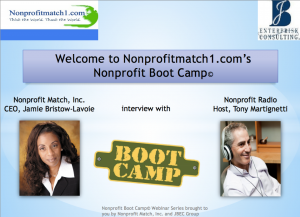 In May I was a guest on Nonprofit Boot Camp with host Jamie Bristow-Lavoie.
In May I was a guest on Nonprofit Boot Camp with host Jamie Bristow-Lavoie. 